Ishika has designed a small oval race track for her remote control car. Her design is shown in the figure 9.55. What is the total distance around the track? Round your answer to the nearest whole cm.
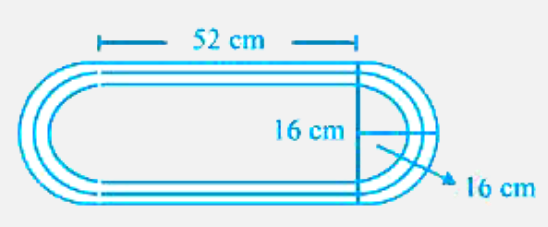
Step by step video & image solution for Ishika has designed a small oval race track for her remote control car. Her design is shown in the figure 9.55. What is the total distance around the track? Round your answer to the nearest whole cm. by Maths experts to help you in doubts & scoring excellent marks in Class 7 exams.
Updated on:21/07/2023Similar Questions
A clever design of a bottle holder (a plank with a hole) is shown in the figure. Note that the holder is not fixed to the support , it stands freely, bur only when the bottle is in. Assume that the mass of the bottle is 1kg. The bottle in its rest position is slightly tipped up (α15∘). Assuming the mass of the holder to be negligible and l=24cm, and the angle θ=53∘. Find the distance of COM of the bottle from the hole (x) so that the bottle and the holder can stand together as shown. (Take cos15∘=24/25). Express your answer on cm.
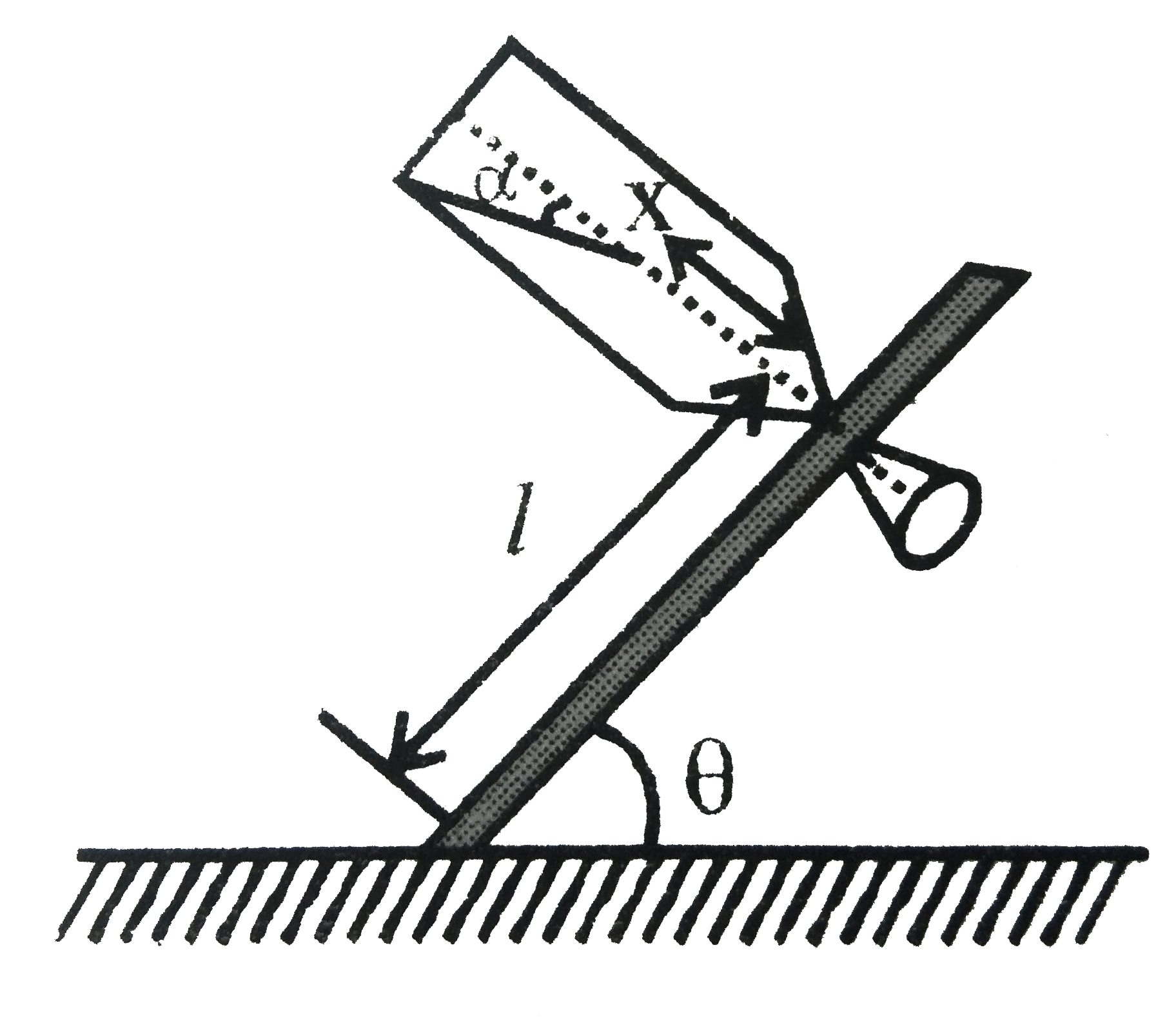 .
.
View SolutionA round table cover has six equal designs as shown in the given figure. If the radius of the cover is 35 cm then find the total area of the design. [Use √3=1.732 and π=3.14]

View Solution
Knowledge Check
Read the passage carefully and answer the question given below:
While the world is still debating the safety of self-driving cars, the futuristic city-state of Dubai, in the United Arab Emirates (UAE), is preparing to launch an autonomous aerial taxi. Starting in July, commuters will be able to summon the world’s first passenger drone, the EHang 184, to transport them to their desired destination without having to deal with Dubai’s congested freeways.
The 142-horsepower quadcopter, which debuted at the Consumer Electronics Show in Las Vegas almost a year ago, in January 2016, weighs 440 pounds and can fly at heights of up to 11,500 feet. Powered by eight propellers, the four-legged, egg-shaped vehicle has room for a single passenger weighing up to 220 pounds and a small suitcase. Though the aerial taxi can reach speeds of up to 100 mph, Dubai’s transportation officials say it will typically operate at about 62 mph.
Riders can ask for the flying taxi to pick them up from designated zones using the company’s smartphone app.When the drone arrives, he/she straps into the race-car-style seat, selects one of the pre-programmed destinations on the touch screen, and sits back and enjoys the flight. To ensure the passenger’s safety, all flights are monitored remotely by a control room on the ground.
In the unlikely event that any of the components malfunction or disconnect, the EHang 184 will make an emergency landing in the closest possible area to ensure the customer’s safety. The drone is also programmed to conduct complex calculations to ensure its route won't collide with that of another drone. While having no control over the remotely piloted vehicle may appear scary, the manufacturer, China-based EHang, says, “It is the safest, smartest and eco-friendly low altitude autonomous aerial vehicle.” The only drawback? The EHang 184 has a battery life of 30 minutes and a flight range of just 31 miles, which means that those with longer commutes are out of luck. Also unknown, is the cost of each ride.
Question: Which of the following is FALSE about EHang 184?AIt has a battery life of more than half an hourBIt was first showcased in Consumer Electronics Show in Las VegasCIt weighs 440 poundsDIt can fly at heights of up to 11,500 feetRead the passage carefully and answer the question given below:
While the world is still debating the safety of self-driving cars, the futuristic city-state of Dubai, in the United Arab Emirates (UAE), is preparing to launch an autonomous aerial taxi. Starting in July, commuters will be able to summon the world’s first passenger drone, the EHang 184, to transport them to their desired destination without having to deal with Dubai’s congested freeways.
The 142-horsepower quadcopter, which debuted at the Consumer Electronics Show in Las Vegas almost a year ago, in January 2016, weighs 440 pounds and can fly at heights of up to 11,500 feet. Powered by eight propellers, the four-legged, egg-shaped vehicle has room for a single passenger weighing up to 220 pounds and a small suitcase. Though the aerial taxi can reach speeds of up to 100 mph, Dubai’s transportation officials say it will typically operate at about 62 mph.
Riders can ask for the flying taxi to pick them up from designated zones using the company’s smartphone app.When the drone arrives, he/she straps into the race-car-style seat, selects one of the pre-programmed destinations on the touch screen, and sits back and enjoys the flight. To ensure the passenger’s safety, all flights are monitored remotely by a control room on the ground.
In the unlikely event that any of the components malfunction or disconnect, the EHang 184 will make an emergency landing in the closest possible area to ensure the customer’s safety. The drone is also programmed to conduct complex calculations to ensure its route won't collide with that of another drone. While having no control over the remotely piloted vehicle may appear scary, the manufacturer, China-based EHang, says, “It is the safest, smartest and eco-friendly low altitude autonomous aerial vehicle.” The only drawback? The EHang 184 has a battery life of 30 minutes and a flight range of just 31 miles, which means that those with longer commutes are out of luck. Also unknown, is the cost of each ride.
Question: Who is most eligible to ride EHang 184?ATwo people who are less than 220 poundsBA single passenger a luggage which combined weighs 220 poundsCThere is no mention of this informationDOne person who is less than 220 pounds with a small suitcaseRead the passage carefully and answer the question given below:
While the world is still debating the safety of self-driving cars, the futuristic city-state of Dubai, in the United Arab Emirates (UAE), is preparing to launch an autonomous aerial taxi. Starting in July, commuters will be able to summon the world’s first passenger drone, the EHang 184, to transport them to their desired destination without having to deal with Dubai’s congested freeways.
The 142-horsepower quadcopter, which debuted at the Consumer Electronics Show in Las Vegas almost a year ago, in January 2016, weighs 440 pounds and can fly at heights of up to 11,500 feet. Powered by eight propellers, the four-legged, egg-shaped vehicle has room for a single passenger weighing up to 220 pounds and a small suitcase. Though the aerial taxi can reach speeds of up to 100 mph, Dubai’s transportation officials say it will typically operate at about 62 mph.
Riders can ask for the flying taxi to pick them up from designated zones using the company’s smartphone app.When the drone arrives, he/she straps into the race-car-style seat, selects one of the pre-programmed destinations on the touch screen, and sits back and enjoys the flight. To ensure the passenger’s safety, all flights are monitored remotely by a control room on the ground.
In the unlikely event that any of the components malfunction or disconnect, the EHang 184 will make an emergency landing in the closest possible area to ensure the customer’s safety. The drone is also programmed to conduct complex calculations to ensure its route won't collide with that of another drone. While having no control over the remotely piloted vehicle may appear scary, the manufacturer, China-based EHang, says, “It is the safest, smartest and eco-friendly low altitude autonomous aerial vehicle.” The only drawback? The EHang 184 has a battery life of 30 minutes and a flight range of just 31 miles, which means that those with longer commutes are out of luck. Also unknown, is the cost of each ride.
Question: Which one of the following options is the antonym of the underlined word ‘congested’?AUnblockedBMassedCCrowdedDJam packed
A round table cover has six equal designs as shown in the given figure. If the radius of the cover is 35 cm then find the total area of the design. (Use √3=1.732andπ=3.14)
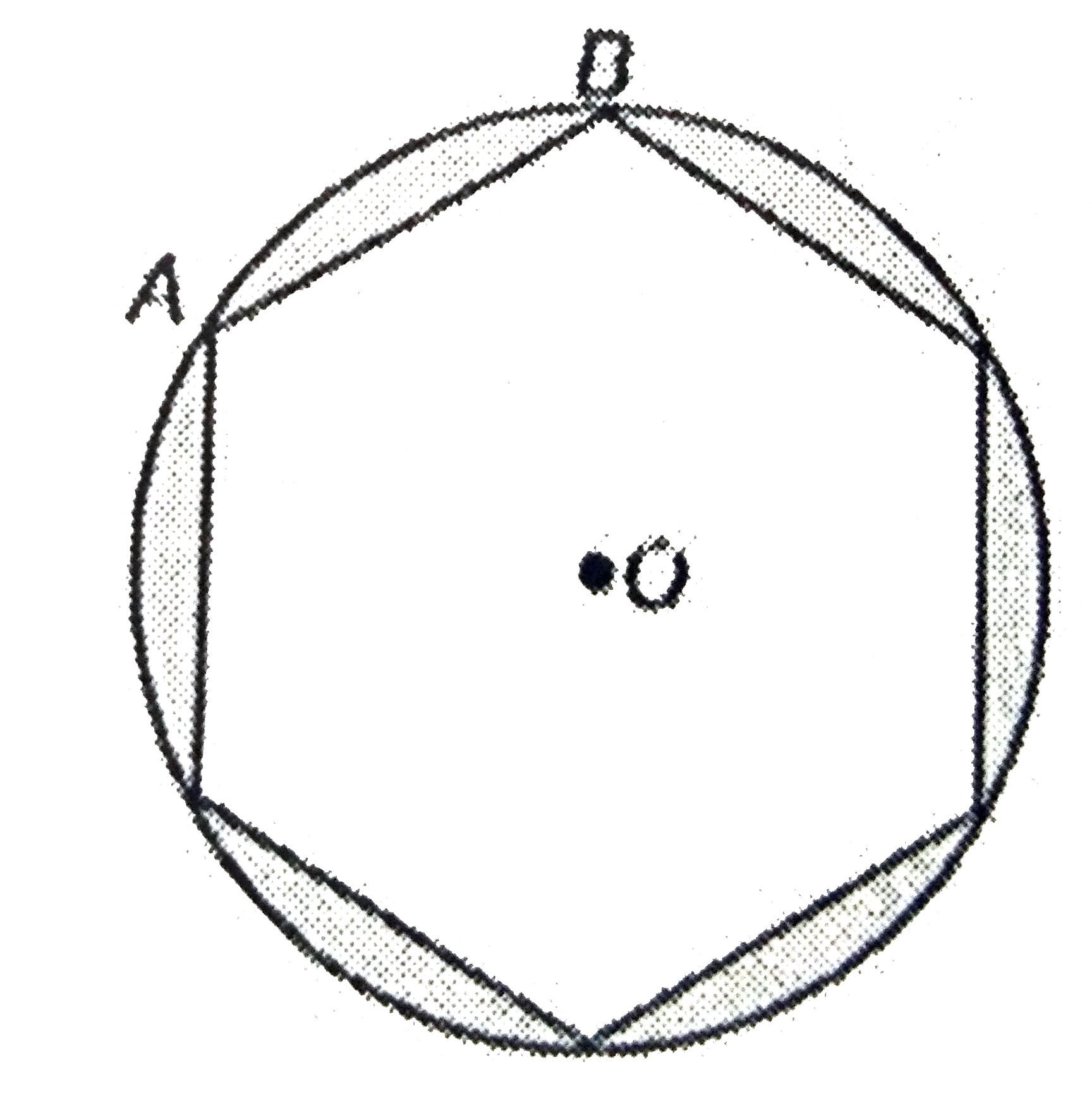
View SolutionTo conduct Sports Day activities, in your rectangular shaped school ground ABCD, lines have been drawn with chalk powder at a distance of 1m each. 100 flower pots have been placed at a distance of 1m from each other along AD, as shown in Figure
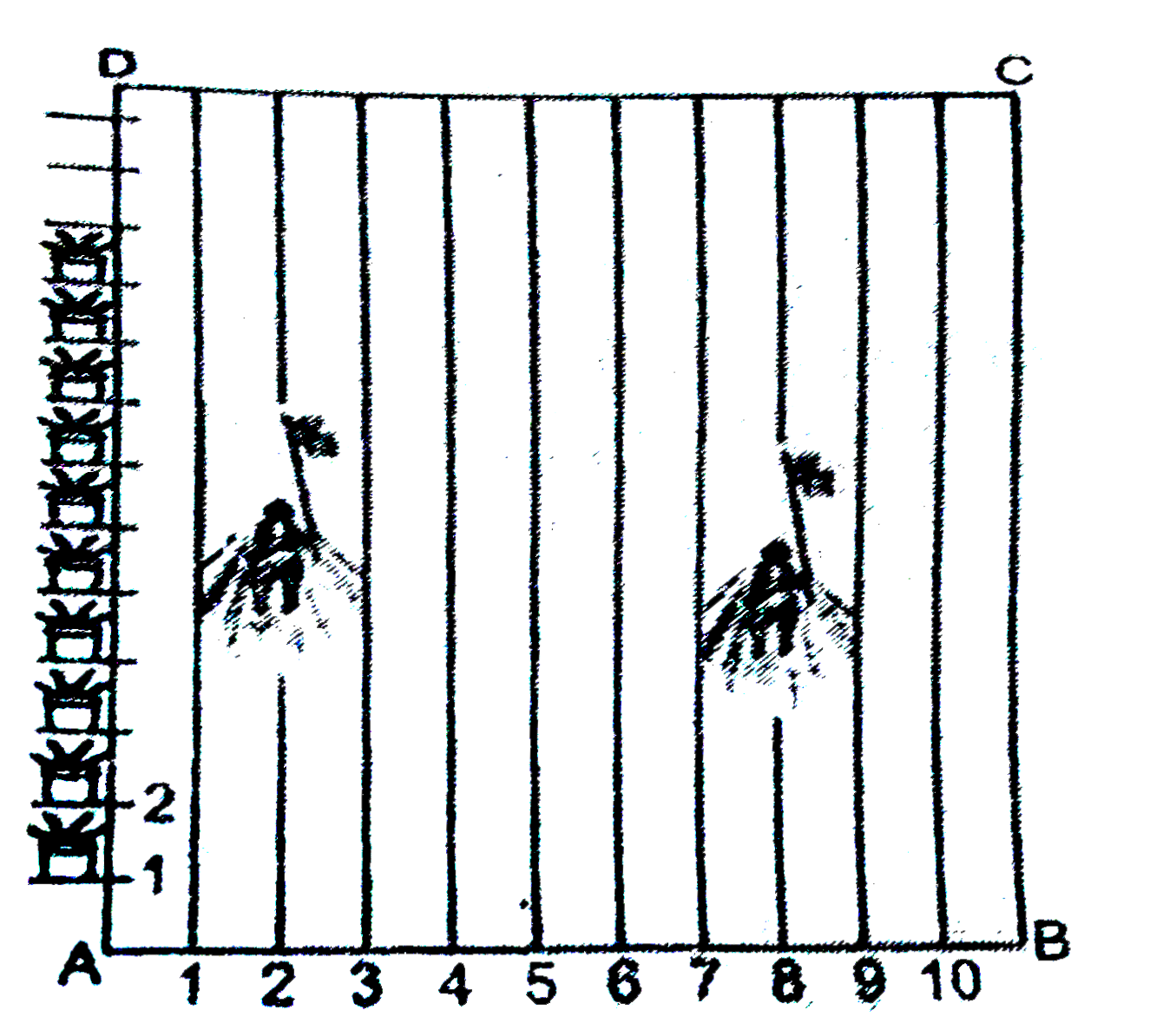
. Niharika runs 14 th the distance AD on the 2nd line and posts a green flag. Preet runs 15 th the distance AD on the eighth line and posts a red flag. What is the distance between both the flags? If Rashmi has to post a blue flag exactly halfway between the line segment joining the two flags, where should she post her flag?
View SolutionTo conduct Sports Day activities, in your rectangular shaped school ground ABCD, lines have been drawn with chalk powder at a distance of 1 m each. 100 flower pots have been placed at a distance of 1 m from each other along AD, as shown in figure.
Niharika runs 14 th the distance AD on the 2nd line and posts a green flag. Preet runs 15 th the distance AD on the eighth line and posts a red flag. What is the distance between both the flags ? If Rashmi has to post a blue flag exactly halfway between the line segment joining the two flags, where should she post her flag ?
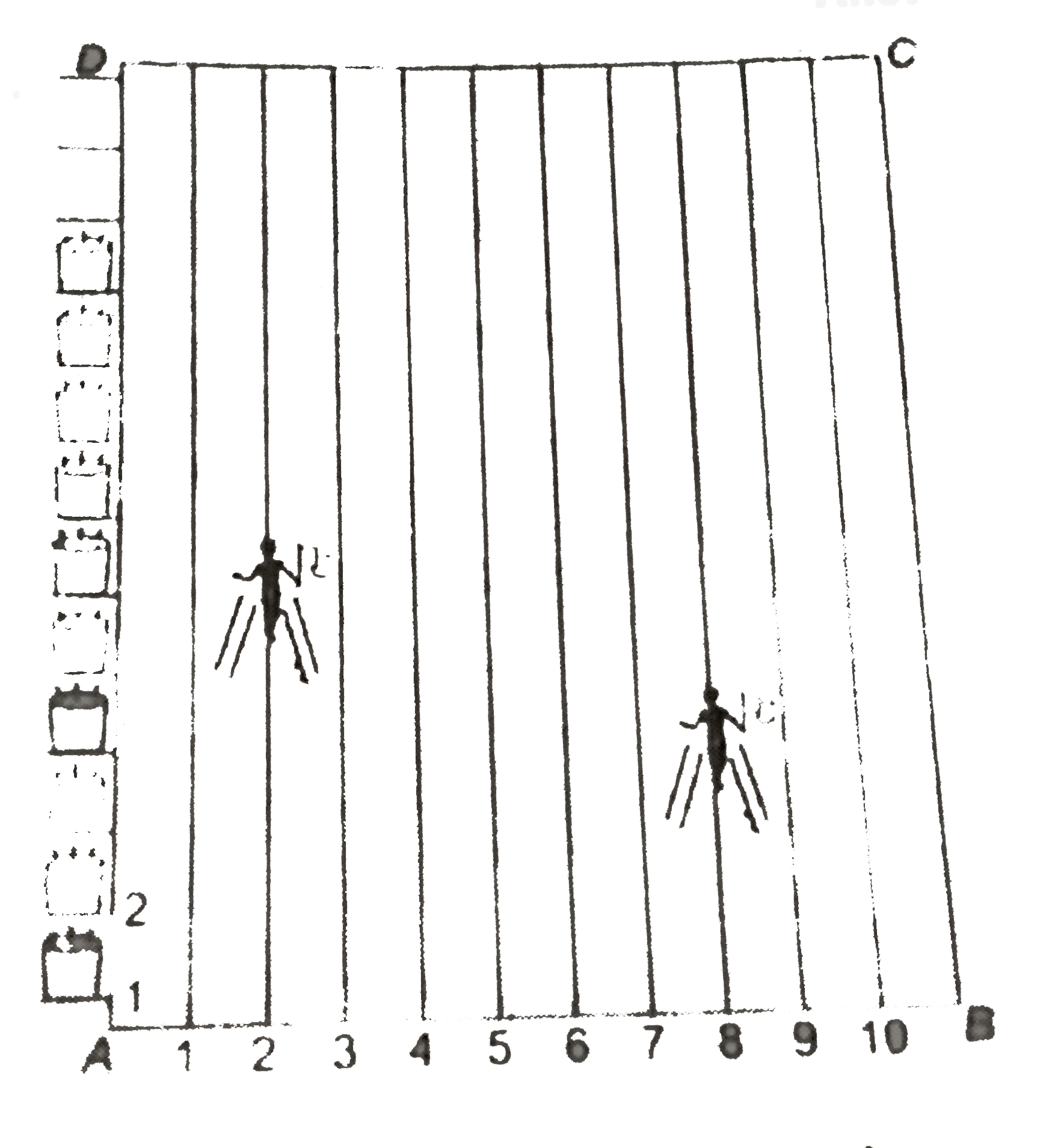
View SolutionRead the passage carefully and answer the question given below:
While the world is still debating the safety of self-driving cars, the futuristic city-state of Dubai, in the United Arab Emirates (UAE), is preparing to launch an autonomous aerial taxi. Starting in July, commuters will be able to summon the world’s first passenger drone, the EHang 184, to transport them to their desired destination without having to deal with Dubai’s congested freeways.
The 142-horsepower quadcopter, which debuted at the Consumer Electronics Show in Las Vegas almost a year ago, in January 2016, weighs 440 pounds and can fly at heights of up to 11,500 feet. Powered by eight propellers, the four-legged, egg-shaped vehicle has room for a single passenger weighing up to 220 pounds and a small suitcase. Though the aerial taxi can reach speeds of up to 100 mph, Dubai’s transportation officials say it will typically operate at about 62 mph.
Riders can ask for the flying taxi to pick them up from designated zones using the company’s smartphone app.When the drone arrives, he/she straps into the race-car-style seat, selects one of the pre-programmed destinations on the touch screen, and sits back and enjoys the flight. To ensure the passenger’s safety, all flights are monitored remotely by a control room on the ground.
In the unlikely event that any of the components malfunction or disconnect, the EHang 184 will make an emergency landing in the closest possible area to ensure the customer’s safety. The drone is also programmed to conduct complex calculations to ensure its route won't collide with that of another drone. While having no control over the remotely piloted vehicle may appear scary, the manufacturer, China-based EHang, says, “It is the safest, smartest and eco-friendly low altitude autonomous aerial vehicle.” The only drawback? The EHang 184 has a battery life of 30 minutes and a flight range of just 31 miles, which means that those with longer commutes are out of luck. Also unknown, is the cost of each ride.
Question: The best title for the passage could be:
View SolutionRead the passage carefully and answer the question given below:
While the world is still debating the safety of self-driving cars, the futuristic city-state of Dubai, in the United Arab Emirates (UAE), is preparing to launch an autonomous aerial taxi. Starting in July, commuters will be able to summon the world’s first passenger drone, the EHang 184, to transport them to their desired destination without having to deal with Dubai’s congested freeways.
The 142-horsepower quadcopter, which debuted at the Consumer Electronics Show in Las Vegas almost a year ago, in January 2016, weighs 440 pounds and can fly at heights of up to 11,500 feet. Powered by eight propellers, the four-legged, egg-shaped vehicle has room for a single passenger weighing up to 220 pounds and a small suitcase. Though the aerial taxi can reach speeds of up to 100 mph, Dubai’s transportation officials say it will typically operate at about 62 mph.
Riders can ask for the flying taxi to pick them up from designated zones using the company’s smartphone app.When the drone arrives, he/she straps into the race-car-style seat, selects one of the pre-programmed destinations on the touch screen, and sits back and enjoys the flight. To ensure the passenger’s safety, all flights are monitored remotely by a control room on the ground.
In the unlikely event that any of the components malfunction or disconnect, the EHang 184 will make an emergency landing in the closest possible area to ensure the customer’s safety. The drone is also programmed to conduct complex calculations to ensure its route won't collide with that of another drone. While having no control over the remotely piloted vehicle may appear scary, the manufacturer, China-based EHang, says, “It is the safest, smartest and eco-friendly low altitude autonomous aerial vehicle.” The only drawback? The EHang 184 has a battery life of 30 minutes and a flight range of just 31 miles, which means that those with longer commutes are out of luck. Also unknown, is the cost of each ride.
Question: The step-by-best procedure to ride EHang 184:
I. Sit back and enjoy the ride
II. Select one of the pre-programmed destinations on the touch screen
III. Use the company’s smartphone app and ask for the flying taxi to pick them up from designated zones
IV. Strap oneself into the race-car-style seat
View Solution
